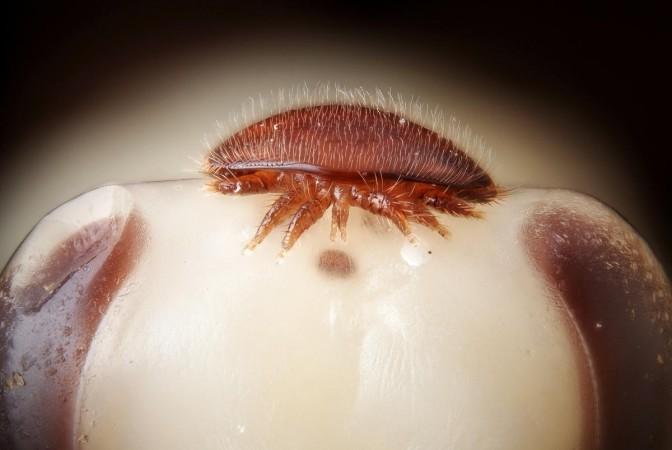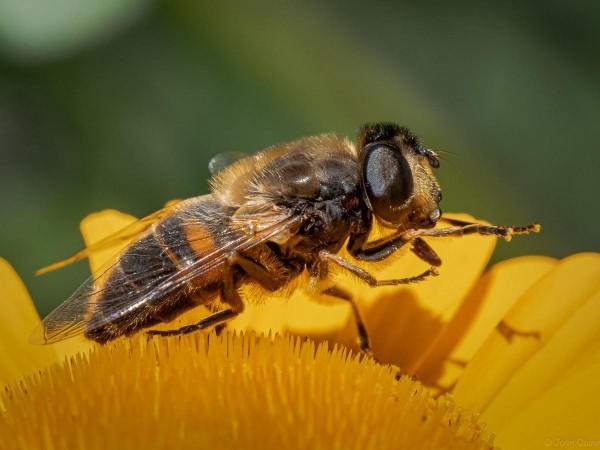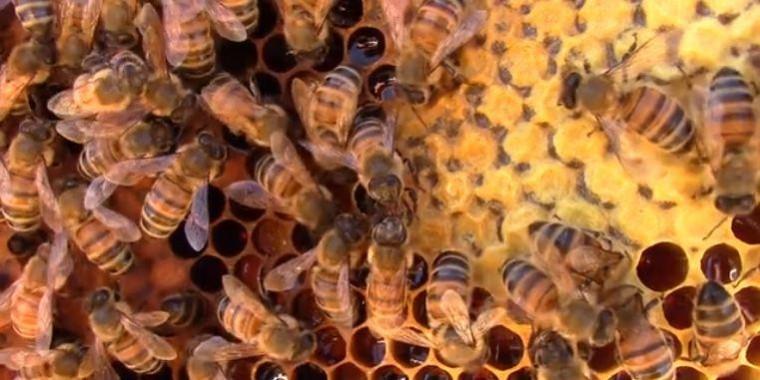The term 'social distancing' has become an integral part of the common lexicon and daily life since the onset of the COVID-19 pandemic. The behaviour has not only altered human interactions but also redefined the use of physical space. Now scientists have found that, much like human beings, honeybees also increase social distancing among themselves when their hive is under threat from a parasite.
According to a new multi-institutional study, Apis mellifera, or European honeybee, colonies respond to the infestation of Varroa destructor, a harmful parasite, by changing the use of space. The interactions among the members of the nest are also modified to increase the social distance between old and young bees.
"Here we have provided the first evidence that honeybees modify their social interactions and how they move around their hive in response to a common parasite," said Dr. Alessandro Cini, co-author of the study, in a statement. The findings were published in the journal Science Advances.
A Devastating Parasite

While there are several factors that can affect Apis mellifera honeybee colonies, the Varroa destructor, an ectoparasite mite, is among the worst. The Varroa complex includes several species. However, V. destructor contributes to most of the devastation attributed to the mites belonging to the genus.
Referred to as the Varroa mite sometimes, the parasite can reproduce only within a honeybee colony. It survives by feeding on the hemolymph—a key extracellular fluid in several insects that is functionally equivalent to blood and lymph in vertebrates—of immature and adult bees. The Varroa mite can harbor around five different viruses, including the deformed wing virus (DWV) that leads to the development of honeybee pupa with shrunken and deformed wings.
Shunning Proximity
Social distancing is observed in animals belonging to different species having diverse evolutionary histories. For example, baboons have been known to show decreased likeliness of cleaning individuals suffering from gastrointestinal infections. Ants that are infected with pathogenic fungus consign themselves to the outskirts of the anthill society.

Like most honeybee colonies, an A.mellifera colony is organized into two major sections or compartments: the outer one that is occupied by foragers, and the innermost section that the queen, the brood, and nurses inhabit. This spatial partitioning within the colony results in a reduced frequency of contact among the two sections than those within the individual sections.
This facilitates the protection of the most valuable members of the hive—the queen, young bees and the brood—from the external environment, thereby, decreasing the chances of diseases in them.
Exercising Social Distancing

Through the current study, the authors aimed to ascertain whether the presence of V. destructor induces alterations in the social organization that could decrease the proliferation of the parasite within the hive. The team compared colonies of A. mellifera that were infested with the Varroa mite with ones that were not.
They observed the occurrence of a behaviour known as 'foraging dance'—that can amplify the transmission of the mite—was less frequent in the central areas of the hive if it was infested with the V. destructor. Also, the concentration of grooming behaviour among members was confined more to the central hive.
According to the team, overall, it seems that foragers shift towards the outer limits of the nest while young groomers and nurse bees move towards the centre, in response to a V. destructor infestation. This is done in order to increase the distance between the honeybee groups.

"Honeybees are a social animal, as they benefit from dividing up responsibilities and interactions such as mutual grooming, but when those social activities can increase the risk of infection, the bees appear to have evolved to balance the risks and benefits by adopting social distancing," highlighted Dr. Cini.
Ideal Model for Study
Dr. Michelina Pusceddu, lead author of the study, emphasized that honeybee colonies present as an ideal model for analyzing social distancing and to fully understand the behaviour's advantage and effectiveness. "The observed increase in social distancing between the two groups of bees within the same parasite-infested colony represents a new and, in some ways, surprising aspect of how honeybees have evolved to combat pathogens and parasites," she explained
She added: "Their ability to adapt their social structure and reduce contact between individuals in response to a disease threat allows them to maximise the benefits of social interactions where possible, and to minimise the risk of infectious disease when needed."








![Nothing to open its first global flagship store in THIS Indian city [details]](https://data1.ibtimes.co.in/en/full/827007/nothing-open-its-first-global-flagship-store-this-indian-city-details.png?w=220&h=138)



